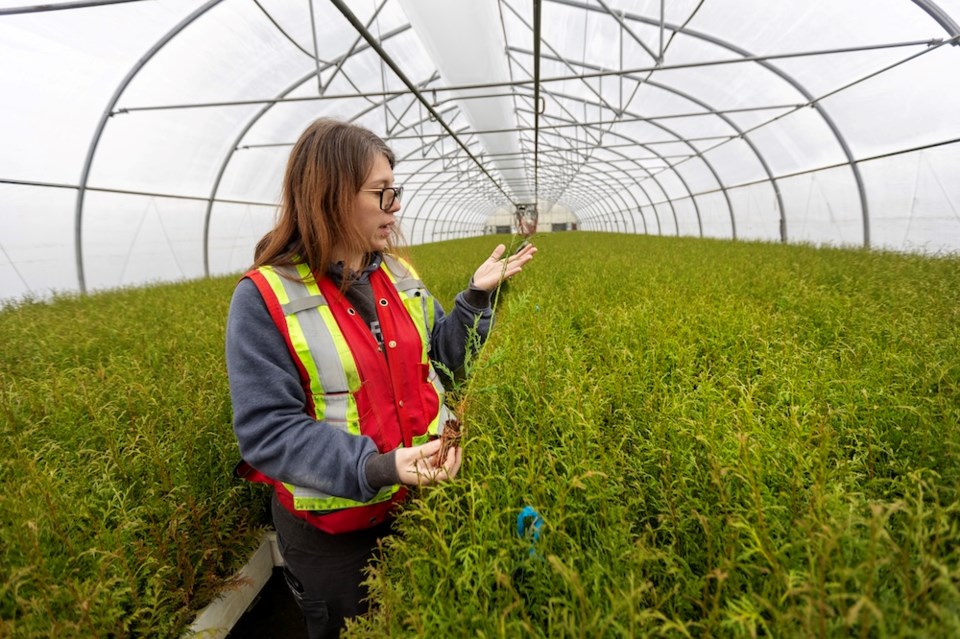The number of trees planted in British Columbia is set to decline for a third year in a row, falling a combined 135 million seedlings short of a B.C. government’s election promise to increase planting amid a string of devastating wildfire seasons.
In B.C., the logging industry is legally required to reforest after harvesting. But as harvest levels have dropped, so too has tree planting.
The province planted 281 million tree seedlings in 2024. But by the end of the 2025 season, that number is expected to drop to 238 million, according to the Ministry of Forests. By the end of 2026, projections from the Canadian Tree Nursery Association (CTNA) suggest the number could fall even further to 226 million — far short of the 300 million trees promised by the NDP government in the last election.
The nearly 20 per cent decline in legally required tree planting comes as B.C.’s logging industry faces a multi-decade softwood lumber dispute with the United States made worse by recent tariffs. It also comes as salvage operations from past pine-beetle infestations wind down, and the province changes how it manages old-growth forests.
Meanwhile, wildfires have claimed an increasing share of the province’s forests, leaving many areas slow or unable to regenerate, said CTNA executive director Rob Keen. In some places, the scale of destruction has burned up natural sources of tree seed.
“Not all of the forests will come back naturally,” Keen said.
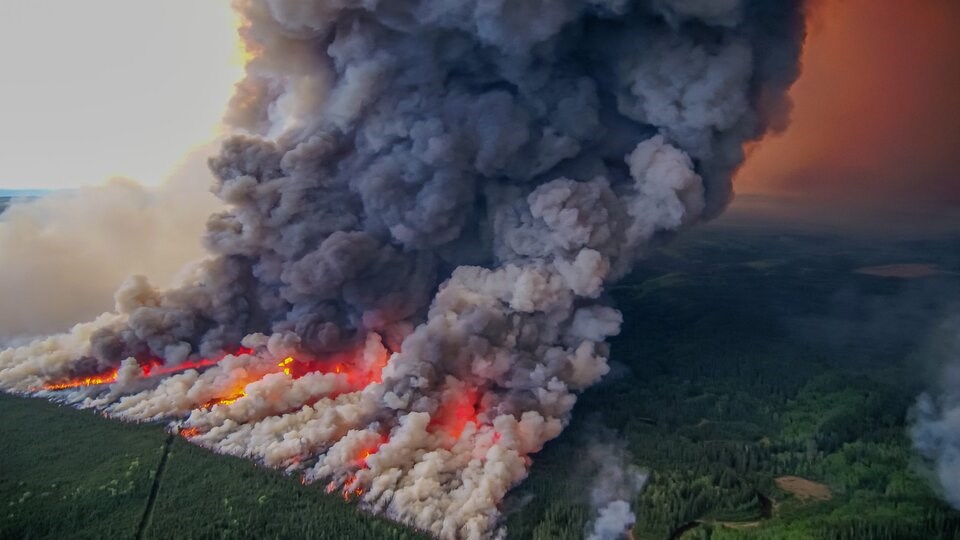
Since 2023, B.C. has lost more than 46,500 square kilometres of forest to fire. Across Canada, that number jumps to nearly 300,000 square kilometres — larger than Italy’s entire land base.
Replanting 15 per cent of those lost forests would require more than 6.8 billion seedlings, the nursery association calculates. Of those, more than a billion would need to be planted in B.C. — more than quadruple the number of trees the province’s logging industry is legally required to plant this year.
That much additional planting comes with a cost, one Keen says governments have an obligation to pay for.
“You’re talking a billion seedlings needed in B.C., above and beyond what the forest industry is legally required to plant,” he said.
“And again, 2025, has not finished. I mean, we continue to see this trend of wildfires escalating year to year. We as a society, a government, we have to get ourselves focused on how we're going to restore these forests.”

In B.C., who pays to restore burned forests is complicated
Since 2017, more than two billion seedlings have been planted in B.C., according to the Ministry of Forests. That includes about 500 million seedlings planted after wildfires.
“Throughout the province, we are seeing the impacts of climate change on our forests and ecosystems,” said the ministry in a statement. Planting trees “plays a key role in climate resilience,” it added.
Who pays for that reforestation depends on who manages the forests.
A fire that burns through a licensee-controlled forest lot obligates the company to replant any trees that haven't yet matured into "free-growing stands." These are usually "baby" forests under 12 years old, according to Christina Lavoie, president of the Forest Nursery Association of B.C. and site manager at Western Forestry Products' Saanich Forestry Centre in Saanichton.
To help cover these costs, Section 108 of the Forest and Range Practices Act allows the government to fund extra expenses or waive the replanting obligation if a stand is hit by an "event causing damage," which includes wildfire. This allows companies to recoup costs for replanting and the money it spent managing the forest before the fire.
“Government approves the amount. The licensee will then do the work,” said Lavoie.
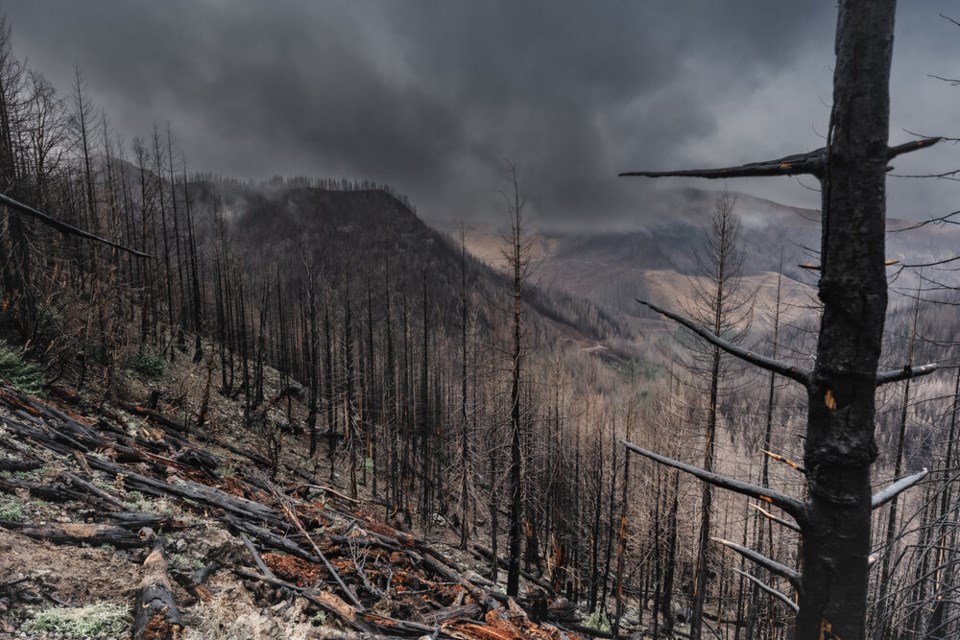
Once a stand is declared free-growing, the province assumes responsibility for its long-term management and any further reforestation. Funding programs like the Forest Investment Program and partnerships with federal initiatives like the 2 Billion Tree Program also help support reforestation at a rate of 40 to 50 million trees per year, according the Ministry of Forests (the latest declines include trees planted under the two programs).
The B.C. government is also responsible for replanting on Crown land where there is no licensee involved.
But Lavoie said her team at the Saanichton nursery has not seen an uptick in sowing requests to replant fire-resistant species like alder, aspen and cottonwood in burned areas, despite having the capacity to grow them.
Slow replanting is happening for two reasons, said Lavoie: there aren't enough experts to survey burned areas, and the supply chains for seedlings are not developed enough to provide First Nations with the quantity of fire-resistant species they want to plant.
“We’re just not there yet,” Lavoie said. “There’s a gap there between policy and application.”
BIV confirmed the B.C. government is currently looking for new funding sources to address this gap and increase tree planting on burned lands.
In the interim, Lavoie said planting delays in some of the heaviest hit parts of the province — such as around the Donnie Creek wildfire in northeast B.C. — have created a significant and growing gap between forests and what gets replanted.
“We see this compounding year after year,” Lavoie said. “It’s just not happening to the scale that fires are ripping through.”
Nurseries need stable investment to maintain supply of trees, says industry group
Planting and growing seedlings to restore forests can take between two and four years, according to the national nursery association.
Without long-term investment in the right tree species, Keen warned nurseries could shut down and leave many without a job.
“It's a highly specialized field. It gets harder and harder to bring it back up again,” he said.
B.C. could be especially hard hit. As of late 2024, the province’s tree nurseries generated nearly $130 million, more than half of the $256 million brought in by Canada’s entire nursery industry, a CTNA report found earlier this year.
Lavoie said any downturn in expected planting requests will be felt across the industry.
“We’re all after the same trees to fill our greenhouse space,” said Lavoie. “Markets get tighter. Profits get reduced. Our friends become our competitors.”
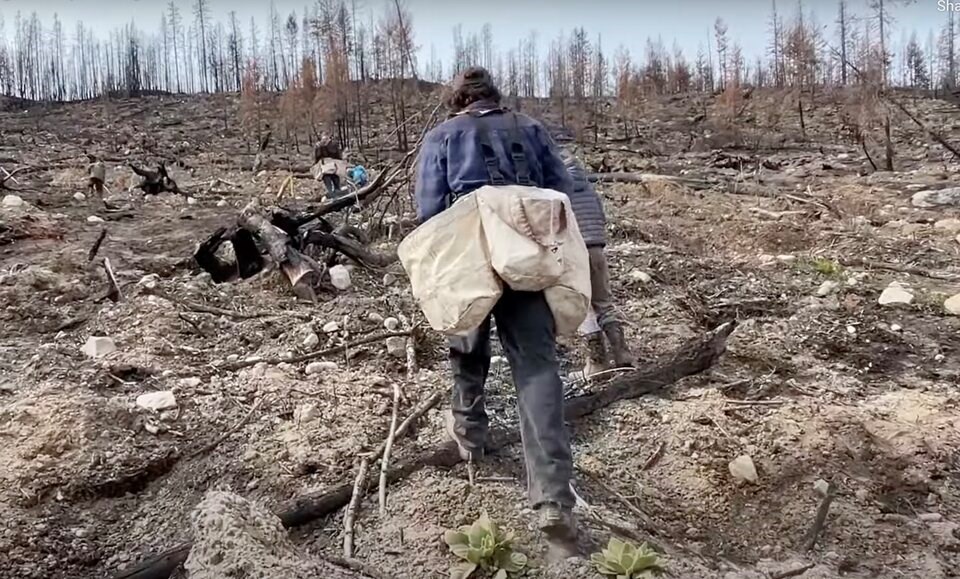
To avoid such a situation, the CTNA says it has created a four-step plan for a National Forest Restoration Task Team that brings together experts to coordinate targeted recovery efforts at the federal, provincial and territorial levels. It would also include Indigenous partners.
One part of the plan involves “rapid identification” of priority planting areas to maximize forest resilience to climate change. A coordinated logistics plan would asses planting areas, collect seeds, plant and monitor tree growth.
Planting would be informed by restoration science that factors in projected future fire and climate conditions. It would also involve collaboration with Indigenous and local communities, as well as industry.
The nursery association also called on Prime Minister Mark Carney to expand the 2 Billion Tree Program past 2031 when it expires, while helping to train workers to fill labour shortages in the nursery sector, among other things.
“The government has an ideal infrastructure in place,” said Keen. “There’s always room for improvement, but we don't have to reinvent it. And if it's disbanded, well, then it's going to take two or three or four years to get it back up again.”
Federal money for logging industry targets trade barriers, not wildfire impacts
The nursery industry’s plan comes less than a week after Carney announced $1.2 billion in support measures for the softwood lumber industry in an effort to shield it from the worst of American duties and fees.
The plan promises $700 million in loan guarantees to address what Carney called "immediate pressures" and $500 million for long-term supports to help companies diversify export markets and develop their products.
Carney also promised that future projects will "prioritize" Canadian lumber.
“We will be our own best customer by relying more on Canadian lumber, Canadian softwood for Canadian projects,” he said.
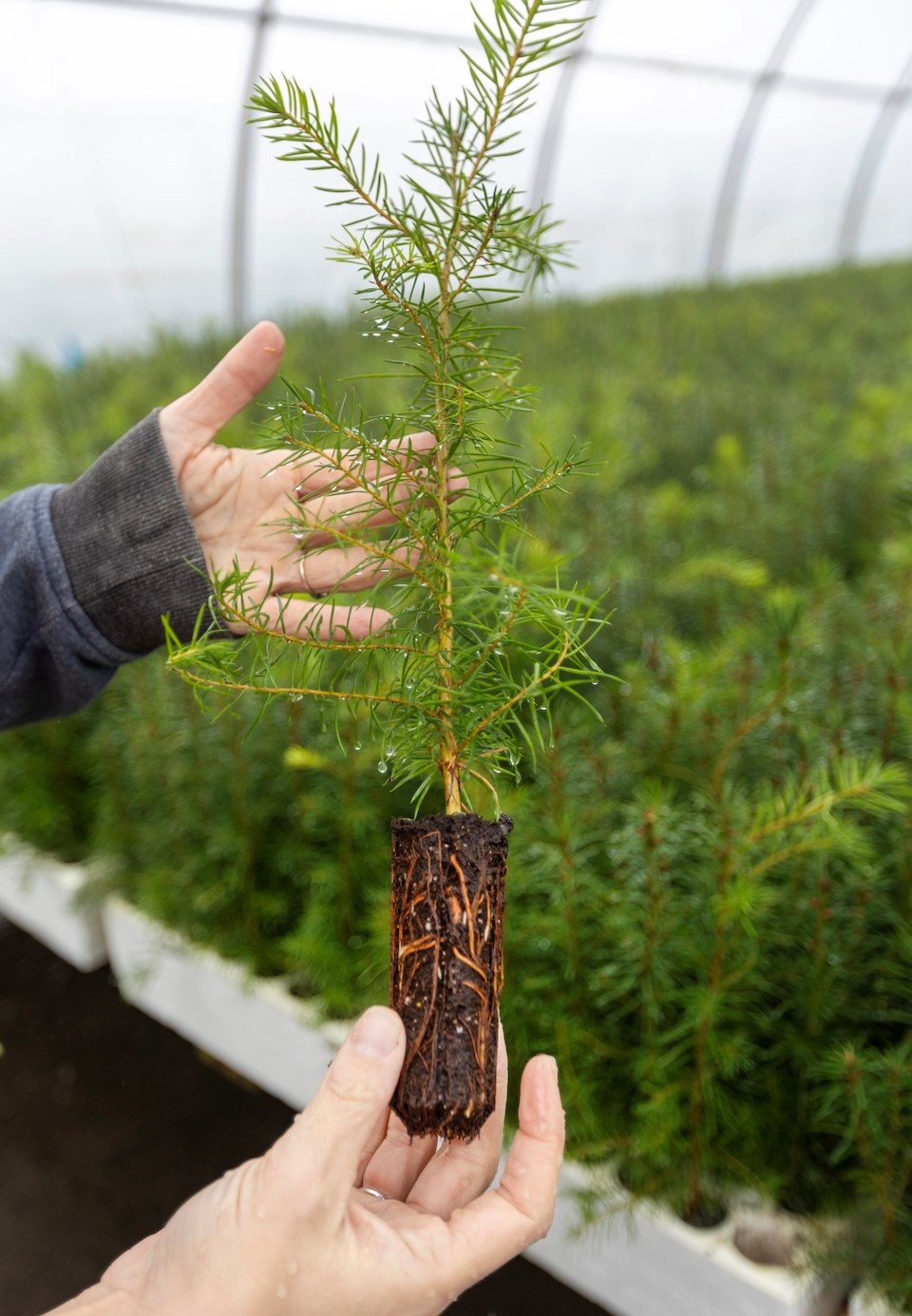
The announcement comes amid heightened trade tensions with the United States over softwood lumber, a decades-long friction point in the Canada-U.S. trade relationship.
The U.S. Commerce Department recently announced it intends to hike anti-dumping duties on Canadian softwood to just over 20 per cent. In addition to the countervailing duties, the fees would be close to 35 per cent.
The fate of the softwood lumber industry is of particular importance in B.C., where Premier David Eby has repeatedly called on Ottawa to link resolution of the softwood lumber dispute to a larger trade deal and to treat the industry with the same importance as Ontario's auto industry.
Carney said Canada has consistently raised the issue with the United States, adding that resolving the trade dispute and the softwood lumber dispute are "distinct but related" when it comes to American protectionism.
"So to be clear — we are not sacrificing any industry," the prime minister said. "We are working for the best deals for all our industries."
Details of the $1.2 billion in forestry funding did not mention the tree nursery industry, something Keen said “seemed like a point of omission.”
BIV reached out to the prime minister's office for comment but has yet to receive a response.
With files from the Canadian Press
CORRECTION: A previous version of this story stated logging tenure holders are required to re-plant trees after harvesting them. In fact, their legal obligation requires "reforestation" of logged areas, a term that includes planting, natural regeneration, site preparation and ongoing forest management until the forest is considered a "free growing" stand.
